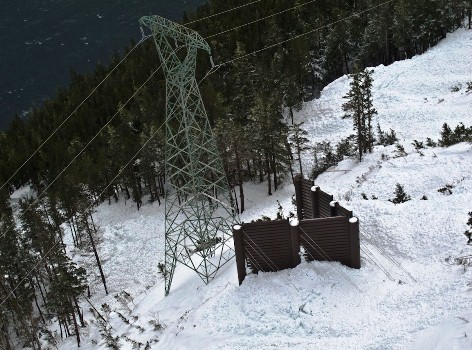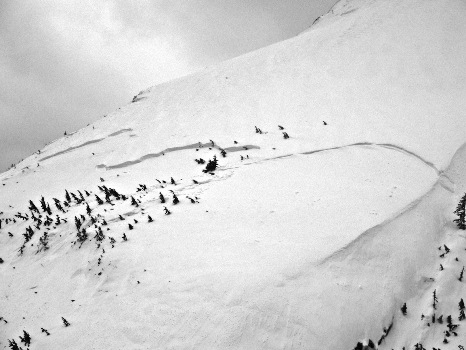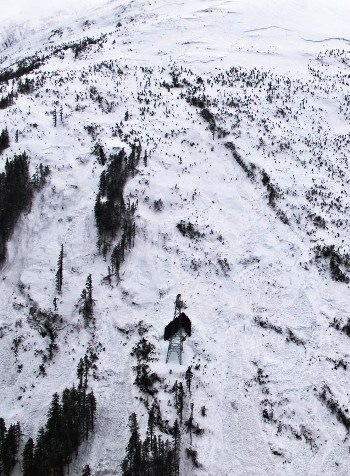
Photos courtesy Mike Janes.
Alaska Electric Light and Power built the structure in 2009, a year after a giant snow slide took out tower 4-6 and forced the company to generate Juneau electricity with expensive diesel fuel for several weeks.
Since then a vulnerable tower was removed, break-away links were installed on some towers, the steel wedge was built, and avalanche forecasters regularly control snow along the 43-mile Snettisham line.
Forecaster Mike Janes says smaller slides were brought down last week before he discovered the natural release the morning of March 9th.
“It started from the same exact place that the slides in April of 2008 did, and it’s about 2,500 feet in elevation. It’s tough to say with these slides how far they would run, but they ran mostly the full-path width and when I say that I mean the new path, because the 2008 slide created a larger path,” he says. With this slide, “one finger ran full-path width into the woods and the other one, the main path, went all the way to the ocean.”
He says wet snow rose more than half way up the wedged-shaped structure, and there was no apparent damage.
“All the guy wires are intact, none of the steel looks to be bent,” Janes says. “I can only visually see on the outside half the wedge because it (was) buried about half way up, but on the back side where’s less snow, I can’t see any bowing or anything like that, so it appears to be in good shape.”

Three-hundred forty-three inches of snow have fallen so far this winter at the Snettisham power house. Janes says more avalanche control work has been done along the transmission line than any previous winter.
Snettisham supplies more than 70 percent of A-E-L & P’s power. The company plans to build two more diversion structures along the line this summer.
